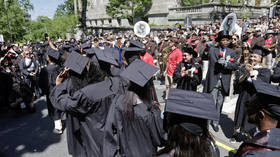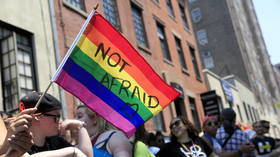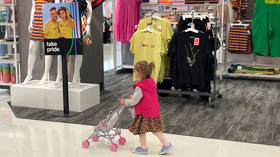Nearly 40% of students at Ivy League school identify as LGBTQ

One of America’s most prestigious schools, Brown University, has seen a surge in LGBTQ sexual orientations over the past decade, with nearly four in ten students now identifying as something other than heterosexual.
A poll last month by the Ivy League university’s newspaper, the Brown Daily Herald, found that 38% of students now identify as LGBTQ. That compares with 14% in 2010, the first year from which data was available.
Most of the surge has come in the past three years. In fact, nearly 80% of students still identified as heterosexual as recently as 2019. A Washington Examiner report on Sunday suggested that Brown’s jump in LGBTQ identification reflected a “social contagion” – rather than a dramatic shift in the student body’s sexual orientations or a sudden rise in confidence to openly express LGBTQ identities.
Lisa Littman, a gender-dysphoria researcher who was formerly an assistant professor at Brown, has argued that some young people identify as transgender because of peer pressure. A study last year by the US Center for the Study of Partisanship and Ideology found LGBTQ identification rates ranging from 51% to 70% at three of America’s most elite private liberal arts schools: Oberlin, Wellesley, and Smith colleges.
Eric Kaufmann, a researcher for the think tank, told the College Fix that sexual behavior hasn’t shifted at the same pace as sexual identification. “If this was about people feeling able to come out, then we should have seen these two trends rise together,” he claimed.
Brown, located in Providence, Rhode Island and founded a dozen years before the American Revolution began, ranks as the seventh-oldest college or university in the US. It stood at No. 13 in a ranking of the nation’s four-year universities by US News & World Report. Tuition, fees, housing, and other costs total nearly $90,000 a year.
The school saw a 25% decline in heterosexual identification between 2010 and 2023, according to the poll. Homosexual identifications climbed 26%, while the number of students identifying as bisexual more than tripled. ‘Other’ LGBTQ identifications soared 793%.
LBGTQ identifications at Brown are more than five times the national rate. A Gallup poll earlier this year found that 7.2% of US adults identify as something other than heterosexual, double the rate of a decade ago. Nearly 21% of so-called Generation Z adults – those born after 1997 – identify as LGBTQ.














